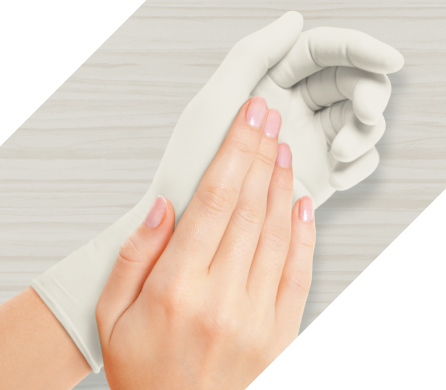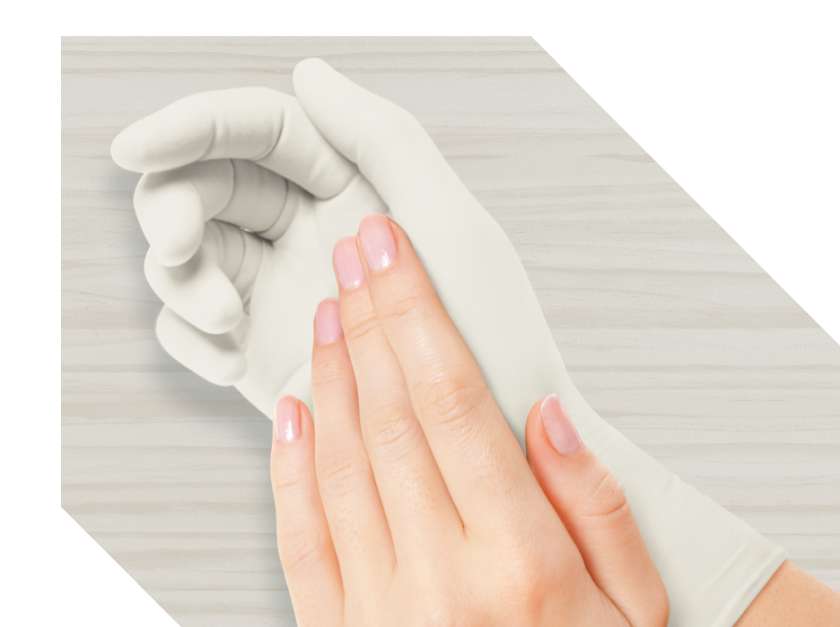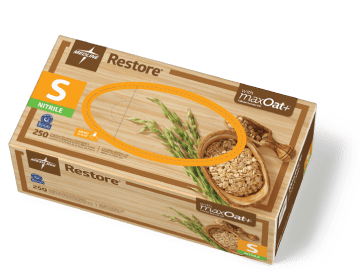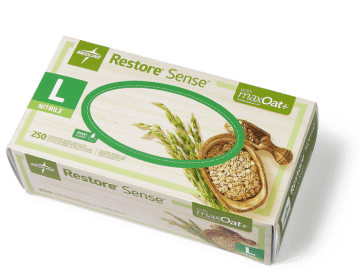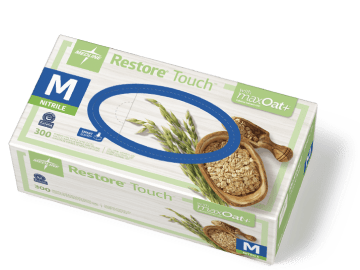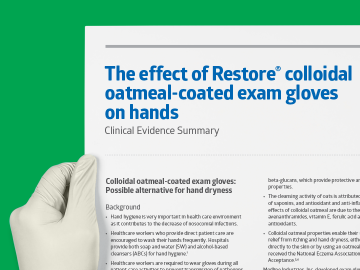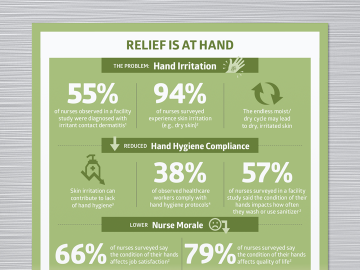Healthy hands help increase hand hygiene compliance
Hand hygiene compliance is the most effective way to prevent the spread of infection. But when caregiver hands are irritated by soap, sanitizer and gloving cycles, compliance suffers.1 In fact, just 38% of observed caregivers comply with hand hygiene protocols.2 And 94% report skin irritation—the reason cited most often for not sanitizing consistently.3
Restore gloves with skin-soothing maxOat+® colloidal oatmeal restore moisture to caregivers’ hands—and that can improve compliance.
66% of caregivers
say the condition of their hands affects their hand hygiene practice3
55% of caregivers
increased use of hand wash or sanitizer after using Restore3
Colloidal oatmeal makes the comforting difference
Finely ground oats offer nutrient-rich properties known for relieving skin irritation through its soothing properties.
Our proprietary colloidal oatmeal blend, maxOat+, coats the inside of Restore gloves providing a protective barrier that helps retain moisture and soothe the skin.
98% of caregivers would recommend Restore to colleagues3
Gluten-, latex- and powder-free, Restore gloves are also approved by The National Eczema Association and certified by The National Celiac Association. Find the level of strength and tactile sensitivity that meets your needs.
Experience Restore gloves for yourself—request a sample
Simply complete this form and a Medline representative will contact you soon to coordinate your no-cost sample.

What caregivers are saying about Restore gloves
REFERENCES:
1. Centers for Disease Control and Prevention. Guideline for Hand Hygiene in Healthcare Settings: Recommendations of the Healthcare Infection Control Practices Advisory Committee and the HICPAC /SHEA/APIC/IDSA Hand Hygiene Task Force. MMWR 2002.51 (No RR-16): [Page 23].
2. Dai, Milkman, Hofmann, and Staats. The Impact of Time at Work and Time Off from Work on Rule Compliance: The Case of Hand Hygiene in Health Care. Journal of Applied Psychology, 2015. Vol 100, No. 3, 846-862. Available at http://www.apa.org/pubs/journals/releases/apl-a0038067.pdf. Accessed February 13, 2017.
3. Based on a 10-day trial with 340 nurses from across the country. Data on file.
